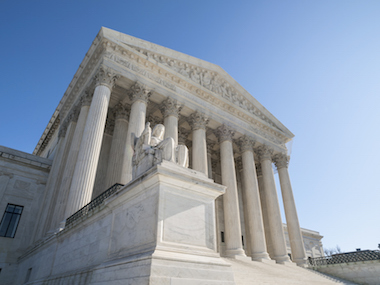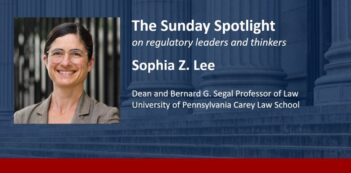
Judge Gorsuch’s confirmation hearings offer a key opportunity to examine a judge’s philosophy on the judiciary’s proper role under the Constitution.
As the most senior member and former Chairman of the Senate Judiciary Committee, I have assessed the qualifications of more than 1,800 nominees to the federal bench. In my 40 years of service in the Senate, I have generally evaluated each nominee based on two criteria: whether the nominee has the qualifications and experience necessary to serve as a federal judge, and whether the nominee understands a judge’s proper role under the U.S. Constitution.
In my experience, presidents rarely nominate unqualified candidates to the federal judiciary. Thus, the confirmation process tends to focus on the second criterion: judicial philosophy. As my colleagues and I consider President Donald Trump’s first Supreme Court nominee, Judge Neil Gorsuch, it is also an appropriate time to elaborate on the scope of our inquiry into a judge’s philosophy, in light of the alarming rise of the modern administrative state.
Let us begin with first principles. The Constitution gives each branch distinct roles: Article I empowers Congress to make the laws. Article II specifies that the President executes and enforces those laws. And under Article III, the courts interpret those laws and the Constitution. The branches may act only according to the powers the Constitution grants them, with the remaining powers and rights reserved to the states and to the people.
Under Article III of the Constitution, it is the duty of the judicial branch to construe and apply our laws. As Chief Justice Marshall famously explained in Marbury v. Madison, “it is emphatically the province and duty of the judicial department to say what the law is.” Under our constitutional separation of powers, it is not the role of federal judges to rewrite laws by imposing their own policy preferences. Nor is it their role to look beyond the law in consideration of their personal views and feelings. And it is also not their role to choose winners and losers based on subjective beliefs that favor one group or type of litigant over another. To borrow from Alexander Hamilton in Federalist 78, the judiciary must remain the “least dangerous” branch.
Over the years, presidents, members of Congress, and judges have attempted to describe the proper role of the “least dangerous” branch in a variety of ways. For instance, for many years we have relied on a distinction between judicial restraint and judicial activism. We have analogized judging to umpiring as opposed to playing the game. We have spoken in terms of judicial independence and impartiality, contrasting the judicial branch with its political peer branches.
In his opinions and other writings, Judge Gorsuch has described this appropriate role for the judiciary, noting that “judges seek to interpret texts as reasonable affected parties might have done rather than rewrite texts to suit their own policy preferences.” Judge Gorsuch’s philosophy has been the traditional yardstick that many on my side of the aisle employ in assessing whether a judicial nominee understands the judiciary’s proper role under the Constitution.
Over the last eight years in particular, however, a proper understanding of the judiciary’s limited role under our constitutional separation of powers has taken on new importance. Events over the last eight years have made clear how judges must not only confine themselves to interpreting the law faithfully, but how they must also rigorously ensure that the other branches of government do not exceed their constitutional authority. That imperative has been amplified greatly by the exponential and perilous growth of the modern administrative state.
For more than a century, the federal government has gravitated toward this vision of bureaucratic “expert” governance. As a practical matter, agency rulemaking has increasingly supplanted the legislative process as the primary means of making the policies that affect our lives. To put this into perspective, by some estimates, federal regulations now impose a burden of $1.885 trillion dollars annually on our economy—an estimated amount that, if close to reality, would equal roughly $15,000 per household per year and represent more than the entire nation’s corporate and individual income tax load combined.
This bureaucratic sprawl accelerated dramatically under the Obama Administration. First, the passage of massive new laws such as Obamacare (or the “Affordable Care” Act) and Dodd-Frank greatly expanded the bureaucracy’s power and its insulation from political control. Moreover, President Barack Obama’s very public abandonment of attempts aimed at fostering cooperation with a Republican-majority Congress—instead turning toward his so-called pen-and-phone strategy—have aggressively pushed the bounds of presidential authority, often past the breaking point.
This steady march toward administrative governance naturally is in tension with the Constitution’s arrangement of powers. After all, one of the central precepts of the Constitution is that the preservation of liberty depends on the separation of powers among branches that are capable of checking each other’s excesses. As James Madison explained in Federalist 47, “the accumulation of all powers, legislative, executive, and judiciary, in the same hands . . . may justly be pronounced the very definition of tyranny.”
In such a way, the modern administrative state has severely undermined the separation of powers that the Framers of the Constitution had envisioned. In the words of Chief Justice Roberts, “the administrative state ‘wields vast power and touches almost every aspect of daily life,’” such that “the Framers could hardly have envisioned today’s ‘vast and varied federal bureaucracy’ and the authority administrative agencies now hold over our economic, social, and political activities.”
To be sure, Congress undoubtedly must play its role in restoring the proper separation of powers between the branches. To that end, as lawmakers, we must resume our role as actual, involved decision-makers over the major policy issues facing our country, rather than delegating broad, unbounded policymaking authority to federal agencies. We must also rein in federal agencies through the legislative reauthorization and appropriations processes, as well as better perform our oversight responsibilities over the regulatory state. And last but not least, we must empower courts to play a more significant role in protecting the public liberty from regulatory overreach.
In the previous Congress, I introduced widely supported legislation—the Separation of Powers Restoration Act—aimed at restoring the judiciary’s proper role vis-à-vis the administrative state. The legislation is straightforward: It would amend the Administrative Procedure Act to clarify that courts should review de novo all questions of law—that is, that courts should neither defer to federal agency interpretations of constitutional or statutory provisions, nor to such interpretations of agency-promulgated rules.
As I explained more fully in an essay last year, the Supreme Court has embraced a number of objectionable doctrines that require courts to defer to federal agency interpretations of law. The Chevron doctrine, first and foremost, commands courts to defer to agencies’ interpretations of ambiguous statutes they administer, so long as those interpretations are reasonable. A second, and perhaps even worse doctrine, is Auer deference—or Seminole Rock deference—which commands courts to defer to agencies’ interpretations of their own regulations, so long as those interpretations are not plainly erroneous. Both deference doctrines, I have argued, displace the judiciary’s constitutional role to say what the law is. The Separation of Powers Restoration Act would eliminate the regulatory state’s dangerous role as an authoritative interpreter of law and would return that power to the judiciary.
How does this escalation of administrative governance affect my view of the proper role of the judiciary? Simply put, courts must faithfully interpret the law and the Constitution, which includes ensuring that the executive branch is confined to its proper role under Article II. Federal agencies should not legislate, nor should they be the authoritative interpreters of laws. Instead, they must be confined to executing the laws as written by Congress and interpreted by the judiciary.
When considering judicial nominees, we must assess whether they understand this role of judges in reining in the administrative state. For example, would they take seriously their responsibility to review agency actions, in order to ensure that the agency has engaged in reasoned decisionmaking? Would they review closely the legal interpretations advanced by federal agencies under that same obligation to “say what the law is”? In light of the expansion of the modern administrative state, this is the standard by which we should assess nominees to the federal bench.
This is a standard that Judge Gorsuch easily meets. Indeed, as I had explained in greater detail on SCOTUSblog last month, Judge Gorsuch’s opinions and other writings epitomize this understanding of the role of a federal judge in the modern administrative state. By way of illustration, in expressing his constitutional concerns with Chevron deference, Judge Gorsuch reasoned, “It was to avoid dangers like these, dangers the founders had studied and seen realized in their own time, that they pursued the separation of powers. A government of diffused powers, they knew, is a government less capable of invading the liberties of the people.”
At his confirmation hearing last week, Judge Gorsuch and I discussed Chevron deference at length. He articulated his concerns that Chevron deference is in tension with the text of Section 706 of the Administrative Procedure Act and raises constitutional due process, equal protection, and separation-of-powers concerns. He further explained, “I have raised some questions that arise in a case that I actually had to deal with and how it would impact people, real people, if agencies can change the meaning of the law back and forth every four years, depending upon the outcome of an election.”
Beyond discussing the proper rule of a federal judge, Judge Gorsuch has also explained his obligation to respect the proper role of each branch of the federal government. For example, when confronted with a federal agency’s attempt to make a law that it would then enforce, Judge Gorsuch asserted, “If the separation of powers means anything, it must mean that the prosecutor isn’t allowed to define the crimes he gets to enforce.”
Similarly, when asked to assess a federal agency’s interpretation of two statutes—Obamacare and the Religious Freedom Restoration Act (RFRA)—Judge Gorsuch ruled against the agency because “Congress structured RFRA to override other legal mandates, including its own statutes, if and when they encroach on religious liberty,” and because the government in that case could not point to any “explicit exclusion” in Obamacare’s “dictates.”
In sum, if confirmed as a Justice of the Supreme Court, Judge Gorsuch would be a fierce defender of the proper separation of powers between the branches of government. We need more federal judges who will not permit, as Judge Gorsuch has aptly put it, “executive bureaucracies to swallow huge amounts of core judicial and legislative power and concentrate federal power in a way that seems more than a little difficult to square with the Constitution of the framers’ design.”
The three branches must work together to restore these constitutional separation of powers. The President has indicated his willingness to further this aim by nominating Judge Gorsuch. I have no doubt Judge Gorsuch would do his part on the Supreme Court. And I hope that the President will continue to nominate—and we will continue to confirm—Justices and judges who similarly understand the judiciary’s proper role under the Constitution.




